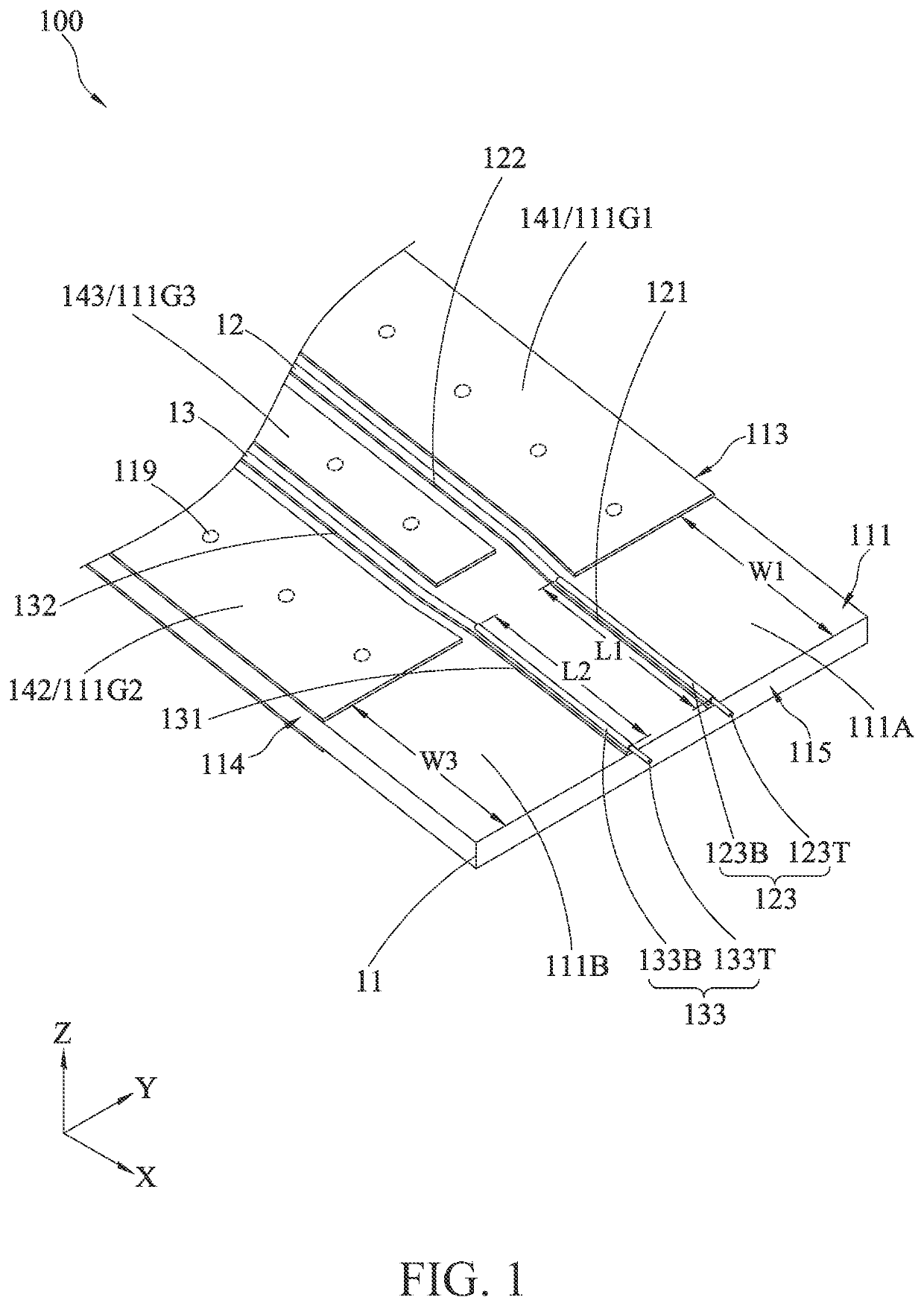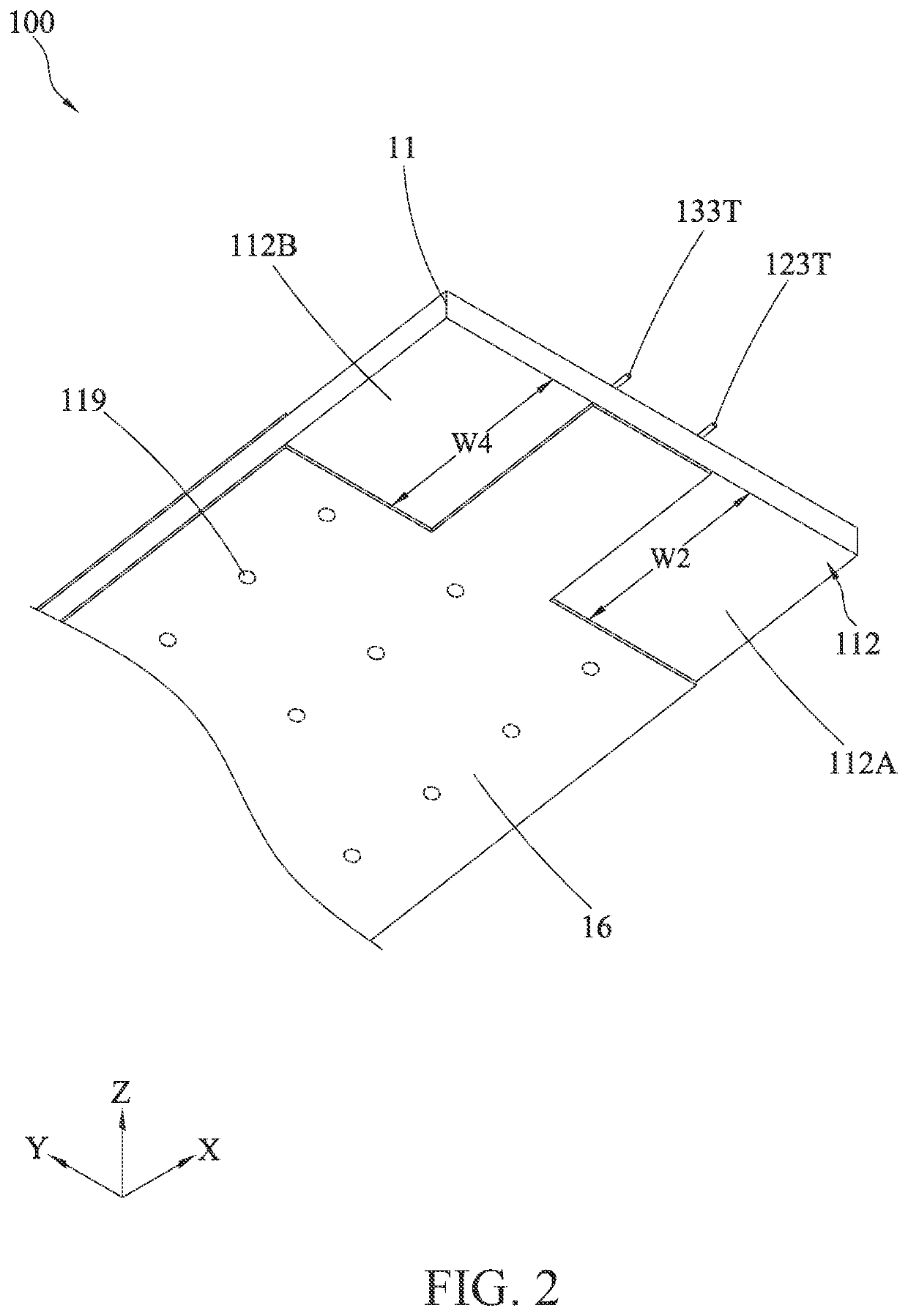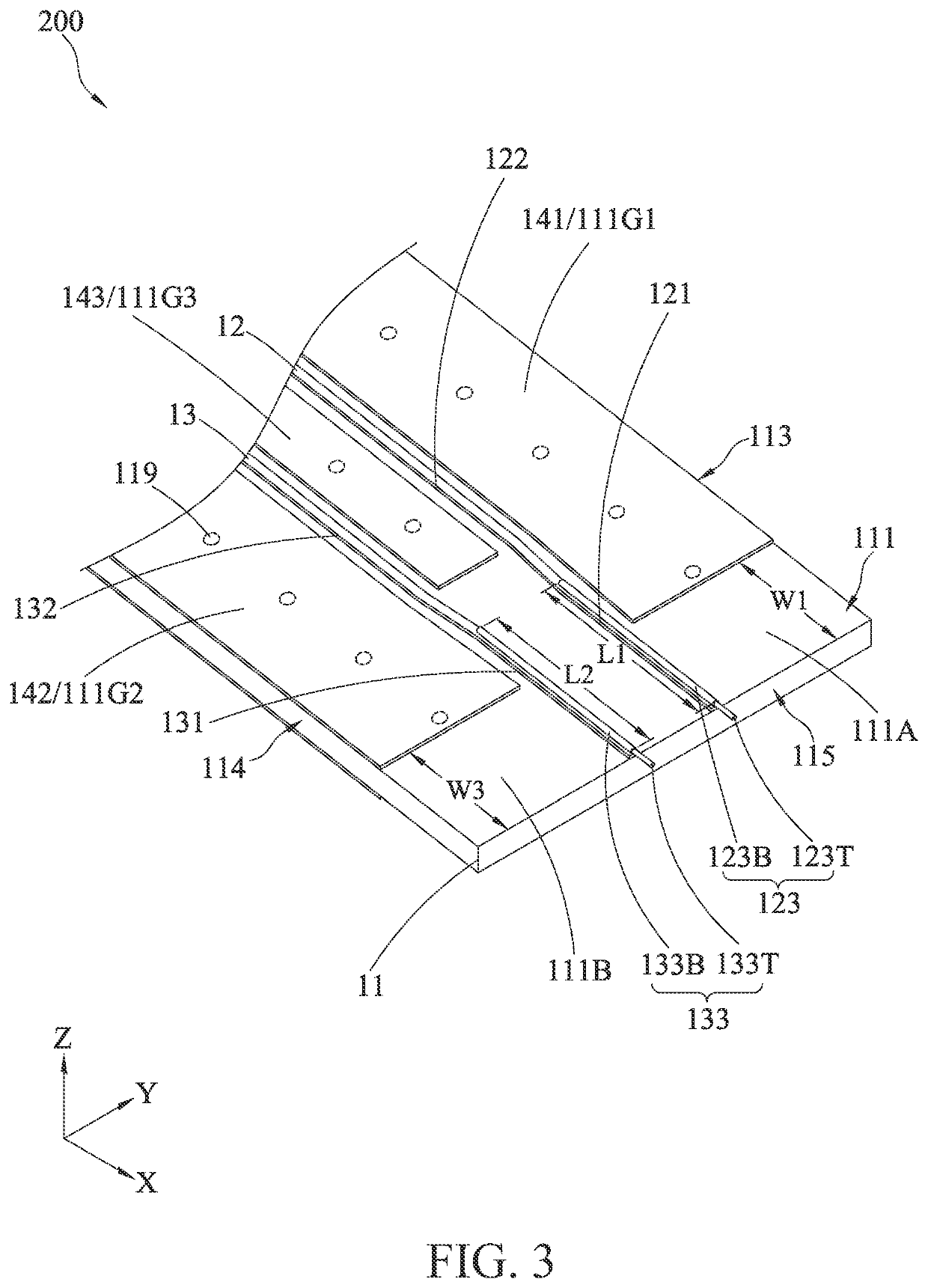Probe assembly
a technology of probe assembly and probe body, which is applied in the direction of electrical testing, measurement devices, instruments, etc., can solve the problems of no design scheme for the probe based on an ss architecture in the prior, and the foregoing probe structure including grounding probes cannot be used, so as to reduce the effective bandwidth of the probe assembly
- Summary
- Abstract
- Description
- Claims
- Application Information
AI Technical Summary
Benefits of technology
Problems solved by technology
Method used
Image
Examples
first embodiment
[0021]FIG. 1 and FIG. 2 are respectively a schematic perspective view (I) and a schematic perspective view (II) according to the present invention, which illustrate a probe assembly 100. The probe assembly 100 includes a dielectric layer 11, a first signal line 12, a second signal line 13, a first pogo pin 123, a second pogo pin 133, a first upper grounding layer 141, a second upper grounding layer 142, and a lower grounding layer 16. The probe assembly 100 is applicable to perform a differential signal test on high-speed signal transmission lines of a printed circuit board, and is particularly applicable to a printed circuit board of which test contacts include no grounding point.
[0022]The dielectric layer 11 includes an upper surface 111, a lower surface 112, a first side 113, a second side 114, and a third side 115, where the first side 113 and the second side 114 are opposite to each other, the third side 115 is located between the first side 113 and the second side 114. The upp...
third embodiment
[0034]FIG. 5 and FIG. 6 are respectively a schematic perspective view (I) and a schematic perspective view (II) according to the present invention, which illustrate a probe assembly 300. The probe assembly 300 includes a dielectric layer 21, a first signal line 22, a second signal line 23, a first pogo pin 223, a second pogo pin 233, an upper grounding layer 24, and lower grounding layer 26. The probe assembly 300 is similarly applied to perform a differential signal test on high-speed signal transmission lines of a printed circuit board, and is particularly applied to a printed circuit board of which test contacts include no grounding point.
[0035]As shown in the figure, the dielectric layer 21 includes an upper surface 211, a lower surface 212, and the dielectric layer 21 may be divided into a body portion 21A and a protruding portion 21B. The body portion 21A includes a side 215. The protruding portion 21B extends and protrudes from the side 215 of the body portion 21A in the firs...
PUM
 Login to View More
Login to View More Abstract
Description
Claims
Application Information
 Login to View More
Login to View More - R&D
- Intellectual Property
- Life Sciences
- Materials
- Tech Scout
- Unparalleled Data Quality
- Higher Quality Content
- 60% Fewer Hallucinations
Browse by: Latest US Patents, China's latest patents, Technical Efficacy Thesaurus, Application Domain, Technology Topic, Popular Technical Reports.
© 2025 PatSnap. All rights reserved.Legal|Privacy policy|Modern Slavery Act Transparency Statement|Sitemap|About US| Contact US: help@patsnap.com



